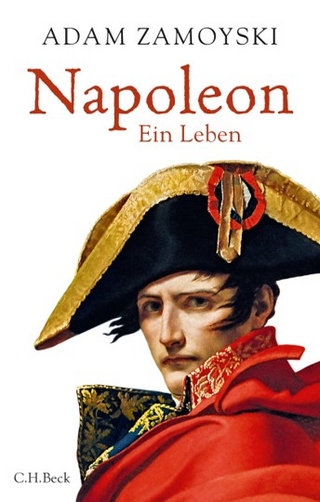
Uncanny Creatures
Doll Thinking in Modern German Culture
Seiten
2024
The University of Michigan Press (Verlag)
978-0-472-03973-9 (ISBN)
The University of Michigan Press (Verlag)
978-0-472-03973-9 (ISBN)
- Lieferbar (Termin unbekannt)
- Versandkostenfrei innerhalb Deutschlands
- Auch auf Rechnung
- Verfügbarkeit in der Filiale vor Ort prüfen
- Artikel merken
Moves past the Freudian discourse of fetishism to propose a new reading of doll artifacts in German culture centered on their ability to evoke a feeling of uncertainty and unsettlement in the viewer.
Germany held a monopoly on the manufacture and export of bisque toy dolls in Europe before WWI. Yet, dolls’ omnipresence in the material, visual, and literary culture of the modern German-speaking world has so far not been properly addressed. In demonstrating this cultural affinity for dolls, Christophe KonÉ draws upon a range of stories and seminal essays on dolls, as well as toys, sculptures, paintings, and photographs. He examines how E.T.A. Hoffmann’s romantic tale The Sandman (1815) has been a major source of inspiration for German-speaking doll makers because of how it centers imagination and inventiveness. Using Hoffmann’s tale as an early example of an amalgam between doll thinking and making in German culture, KonÉ shows how it initiated a genealogy of doll thinkers (Freud & Jentsch), writers (Rilke), painters (Kokoschka), photographers (Bellmer), and makers (Pritzel).
Uncanny Creatures then explores how this unusual interest in human-like figures continues a long tradition of thought devoted to conceptualizing “things,” from Immanuel Kant’s theory of the thing-in-itself to Martin Heidegger’s lecture on the thing, and Eduard MÖrike or Rainer Maria Rilke’s thing-poems. Because dolls occupy a liminal space—not quite things and more than mere objects—they appear as uncanny creatures which have held a fascination for writers, thinkers, and artists alike. Uncanny Creatures moves past the Freudian discourse of fetishism to propose a new reading of doll artifacts in German culture centered on their ability to evoke a feeling of uncertainty and unsettlement in the viewer.
Germany held a monopoly on the manufacture and export of bisque toy dolls in Europe before WWI. Yet, dolls’ omnipresence in the material, visual, and literary culture of the modern German-speaking world has so far not been properly addressed. In demonstrating this cultural affinity for dolls, Christophe KonÉ draws upon a range of stories and seminal essays on dolls, as well as toys, sculptures, paintings, and photographs. He examines how E.T.A. Hoffmann’s romantic tale The Sandman (1815) has been a major source of inspiration for German-speaking doll makers because of how it centers imagination and inventiveness. Using Hoffmann’s tale as an early example of an amalgam between doll thinking and making in German culture, KonÉ shows how it initiated a genealogy of doll thinkers (Freud & Jentsch), writers (Rilke), painters (Kokoschka), photographers (Bellmer), and makers (Pritzel).
Uncanny Creatures then explores how this unusual interest in human-like figures continues a long tradition of thought devoted to conceptualizing “things,” from Immanuel Kant’s theory of the thing-in-itself to Martin Heidegger’s lecture on the thing, and Eduard MÖrike or Rainer Maria Rilke’s thing-poems. Because dolls occupy a liminal space—not quite things and more than mere objects—they appear as uncanny creatures which have held a fascination for writers, thinkers, and artists alike. Uncanny Creatures moves past the Freudian discourse of fetishism to propose a new reading of doll artifacts in German culture centered on their ability to evoke a feeling of uncertainty and unsettlement in the viewer.
Christophe KonÉ is Associate Professor of German at Williams College and Director of the Oakley Center for Humanities and Social Sciences.
List of Illustrations
Acknowledgments
Introduction
Chapter I. Doll Thinking: A Hermeneutic Method. The Wooden Doll Olimpia in E.T.A. Hoffman’s The Sandman (1816)
Chapter II. Doll Thinking: An Aesthetic Investigation. Oskar Kokoschka’s Fluffy Alma-Doll by Hermine Moos
Chapter III. Doll Thinking: A Kinetic Approach. Lotte Pritzel’s Wax Dolls
Chapter IV. Doll thinking: An Epistemological Method. Hans Bellmer’s Papier MÂchÉ Dolls
Epilogue
Bibliography
Index
| Erscheinungsdatum | 08.08.2024 |
|---|---|
| Reihe/Serie | Social History, Popular Culture, And Politics In Germany |
| Zusatzinfo | 58 photographs |
| Verlagsort | Ann Arbor |
| Sprache | englisch |
| Maße | 152 x 229 mm |
| Themenwelt | Kunst / Musik / Theater ► Kunstgeschichte / Kunststile |
| Geisteswissenschaften ► Geschichte ► Regional- / Ländergeschichte | |
| ISBN-10 | 0-472-03973-3 / 0472039733 |
| ISBN-13 | 978-0-472-03973-9 / 9780472039739 |
| Zustand | Neuware |
| Informationen gemäß Produktsicherheitsverordnung (GPSR) | |
| Haben Sie eine Frage zum Produkt? |
Mehr entdecken
aus dem Bereich
aus dem Bereich
Erinnerungen
Buch | Softcover (2024)
Pantheon (Verlag)
16,00 €


